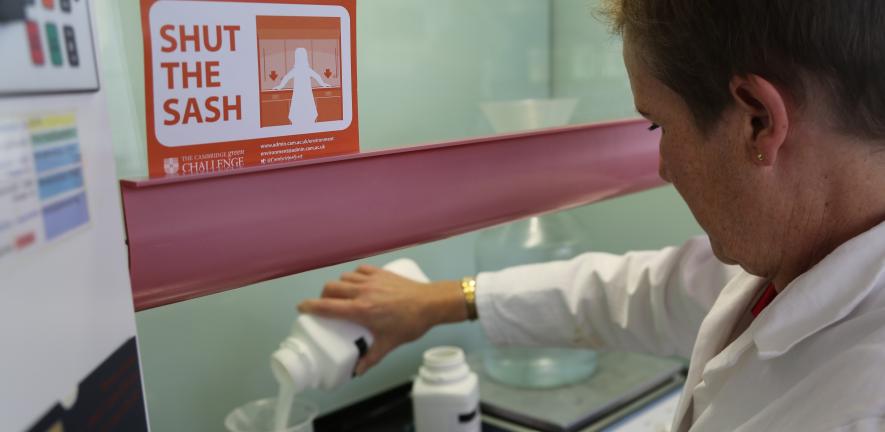
Submitted by Grainne Kennedy on Thu, 2018-01-25 16:32
In light of Spotlight on Sustainable Research in February, the Environment & Energy section is highlighting the many ways that you can incorporate sustainability into your research or studies
For those wanting to learn about tangible actions that can be taken to reduce environmental impacts, the Environment & Energy section are hosting a workshop to share and explore actions that boost the environmental performance of labs, you can register here. Previously successful Green Impact Labs groups will be invited to share their experiences and the tips and tricks that have worked for them.
Labs vary hugely across the University estate, making ‘one-size-fits-all’ advice and solutions tricky to put together. However, we have collated a list of our top seven ‘big impact actions’ that can be taken:
-
Out with the old, in with the new. A lot of scientific research requires cold storage of samples in ultra-low temperature freezers. Towards the end of their lifespan these can easily use more than double the electricity of an average UK household! The Environment & Energy section run an Equipment Replacement Programme which provides financial incentives to upgrade to more efficient freezers. Replacing your older equipment with new energy-efficient models can save significant amounts of energy. This same scheme can be used to access funding for purchasing energy efficient drying cabinets.
-
Supplies supplies! Be smarter with your chemicals and supplies purchasing. The new ChemInventory that is being rolled out across the University to track harmful chemicals stocks will allow users to see what their neighbours have or flag chemicals that they want to get rid of.
-
Sharing is caring. Do you really need to use up valuable grant funding on that new piece of equipment? The Equipment Sharing Project is a live database documenting all equipment above a certain value, which is available for booking out to other users, from other labs, departments or even universities.
-
Waste not, want not. Identify the dividing line of when waste becomes contaminated and confirm this with your Departmental Safety Officer. You can then manage your waste streams in a way that keeps contaminated and uncontaminated waste separate. Uncontaminated waste can then be recycled. Clearly labelled bins can help with this.
-
A fume minutes of your time. Shut the sash on your fume cupboards when they’re not in use! Not only will the extract fan in the cupboard save energy by not having to work as hard, but the lab space will stay warmer, calmer and safer (as less warm air will be needlessly sucked outside). Reminder stickers which can be placed on the fume cupboard are available from the Environment and Energy section.
-
A real turn off for the books. For in-demand equipment, you will probably already have a booking procedure in place. Empower the lab users to switch off the equipment at the end of the day, if it is not booked. It will encourage efficient lab procedure.
-
Water, water everywhere. Treating water for use in laboratories is very wasteful. To produce one litre of type 3 water by reverse osmosis, three more litres are sent to drain! Various chemicals and electricity is also required. Audit your water usage, identify where you can minimise water requirement and only use the purity level required by the experiment.
For more useful actions, support, and recognition, sign up for Green Impact and explore the Labs tab. Alternatively, email environment@admin.cam.ac.uk for more specialised assistance and advice
